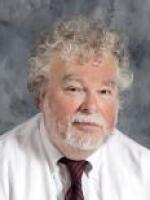You can't see it from Genesee Street in Cheektowaga, but might see it from an airplane flying in or out of Buffalo Niagara International Airport. Calspan unveiled its new $20 million automotive crash-test facility Thursday.

Calspan began in 1950 as a research program for Cornell University and went through a series of owners until John Yurtchuk and Lou Knotts bought the company's aging facilities on Genesee Street. Until this facility was built, Calspan did a lot of its work outside on a 40-year-old track that's best years were behind it.
"They had not kept up with the latest standards for test facilities and equipment, said Knotts. "We tested outside, which exposed the test cars to be seen by the public. We shoveled snow off the track during the winter. There were challenges, controlled accurate speeds at impact. One visitor here from Europe told us they loved our team, but our crash lab should be in a museum."
Knotts and Yurtchuk decided to change that, shifting the facility to a giant 650'-long indoor test track to turn cars into battered masses of steel and electronics for research purposes. And that's not just your traditional cars, with gas, diesel or natural gas engines.
Electric cars have to meet the same safety rules. Vehicle Crash Test Director Jerry Goupil said the same research process applies if a battery runs the car.

"Because this is a laboratory environment and things are done to good engineering practices," Goupil said. "When we get a vehicle in here, no matter what the powertrain is, no matter where it stands in its development cycle, we sit down with customers and really understand what have they done, what type of analysis have they done, what concerns they have - and we really follow a regimented process to make sure we execute the tests not only precisely and accurately but also safely."
An auto company can come in and set up a car or cars to test for a specific issue, perhaps high speed or street speed. There's even a vast block of concrete to crash a vehicle into to see what happens.
High-speed cameras, special tape on vehicles and all kinds of electronic gadgetry allow the effect of a crash on a car or an assortment of crash-test dummies to be measured for research. For example, an underground tow cable system allow two cars to be crashed into each other. A mammoth amount of data is created from each test for automakers to ponder.





